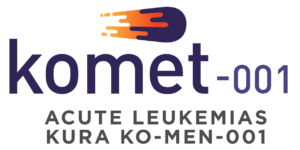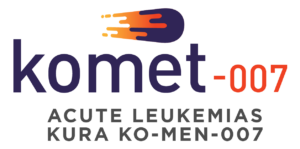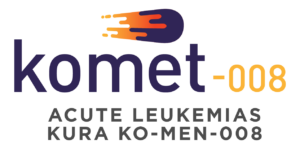1. National Comprehensive Cancer Network. NCCN Guidelines for Patients: Acute Myeloid Leukemia. 2024. Accessed June 12, 2024. 2. Mayo Clinic. Acute lymphocytic leukemia. Accessed June 17, 2021. https://www.mayoclinic.org/diseases-conditions/acutelymphocytic-leukemia/symptoms-causes/syc-20369077 3. Dong Y, Shi O, Zeng Q, et al. Leukemia incidence trends at the global, regional, and national level between 1990 and 2017. Exp Hematol Oncol. 2020;9:14. 4. Yi M, Li A, Zhou L, Chu Q, Song Y, Wu K. The global burden and attributable risk factor analysis of acute myeloid leukemia in 195 countries and territories from 1990 to 2017: estimates based on the global burden of disease study 2017. J Hematol Oncol. 2020;13(1):72. 5. Cancer.org. Cancer Facts & Figures 2024. Accessed June 12, 2024. https://www.cancer.org/content/dam/cancer-org/research/cancer-facts-and-statistics/annual-cancer-facts-and-figures/2024/2024-cancer-facts-and-figures-acs.pdf 6. DiNardo CD, Cortes JE. Mutations in AML: prognostic and therapeutic implications. Hematology. 2016(1):348-355. 7. Klossowski S, Miao H, Kempinska K, et al. Menin inhibitor MI-3454 induces remission in MLL1-rearranged and NPM1-mutated models of leukemia. J Clin Invest. 2020;130(2):981-997. 8. Papaemmanuil E, Gerstung M, Bullinger L, et al. Genomic classification and prognosis in acute myeloid leukemia. N Engl J Med. 2016;374(23):2209-2221. 9. Referenced with permission from the NCCN Clinical Practice Guidelines in Oncology (NCCN Guidelines®) for Acute Myeloid Leukemia V.3.2021. © National Comprehensive Cancer Network, Inc. 2021. All rights reserved. Accessed October 19, 2021. To view the most recent and complete version of the guideline, go online to NCCN.org. NCCN makes no warranties of any kind whatsoever regarding their content, use or application and disclaims any responsibility for their application or use in any way. 10. Referenced with permission from the NCCN Clinical Practice Guidelines in Oncology (NCCN Guidelines®) for Acute Lymphoblastic Leukemia V.2.2021. © National Comprehensive Cancer Network, Inc. 2021. All rights reserved. Accessed October 19, 2021. To view the most recent and complete version of the guideline, go online to NCCN.org. NCCN makes no warranties of any kind whatsoever regarding their content, use or application and disclaims any responsibility for their application or use in any way. 11. American Cancer Society. How chemotherapy drugs work. Revised November 22, 2019. Accessed June 17, 2021. https:// www.cancer.org/treatment/treatments-and-side-effects/treatment-types/chemotherapy/how-chemotherapy-drugs-work.html 12. Ferrara F, Barosi G, Venditti A, et al. Consensus-based definition of unfitness to intensive and nonintensive chemotherapy in acute myeloid leukemia: a project of SIE, SIES and GITMO group on a new tool for therapy decision making. Leukemia. 2013;27(5):997-999.13. Mayo Clinic. Acute myelogenous leukemia diagnosis and treatment. Accessed October 15, 2021. https://www.mayoclinic.org/diseases-conditions/acute-myelogenous-leukemia/diagnosis-treatment/drc-20369115 14. Harvard Health Publishing. Leukemia. Published December 12, 2014. Accessed June 17, 2021. https://www.health.harvard.edu/cancer/leukemia 15. National Comprehensive Cancer Network. NCCN Guidelines for Patients: Acute Lymphoblastic Leukemia. 2021. Accessed October 19, 2021. 16. Reville PK, Kadia TM. Maintenance Therapy in AML. Front Oncol. 2021;10:619085. 17. DeWolf S, Tallman MS. How I treat relapsed or refractory AML. Blood. 2020;136(9):1023-1032.




